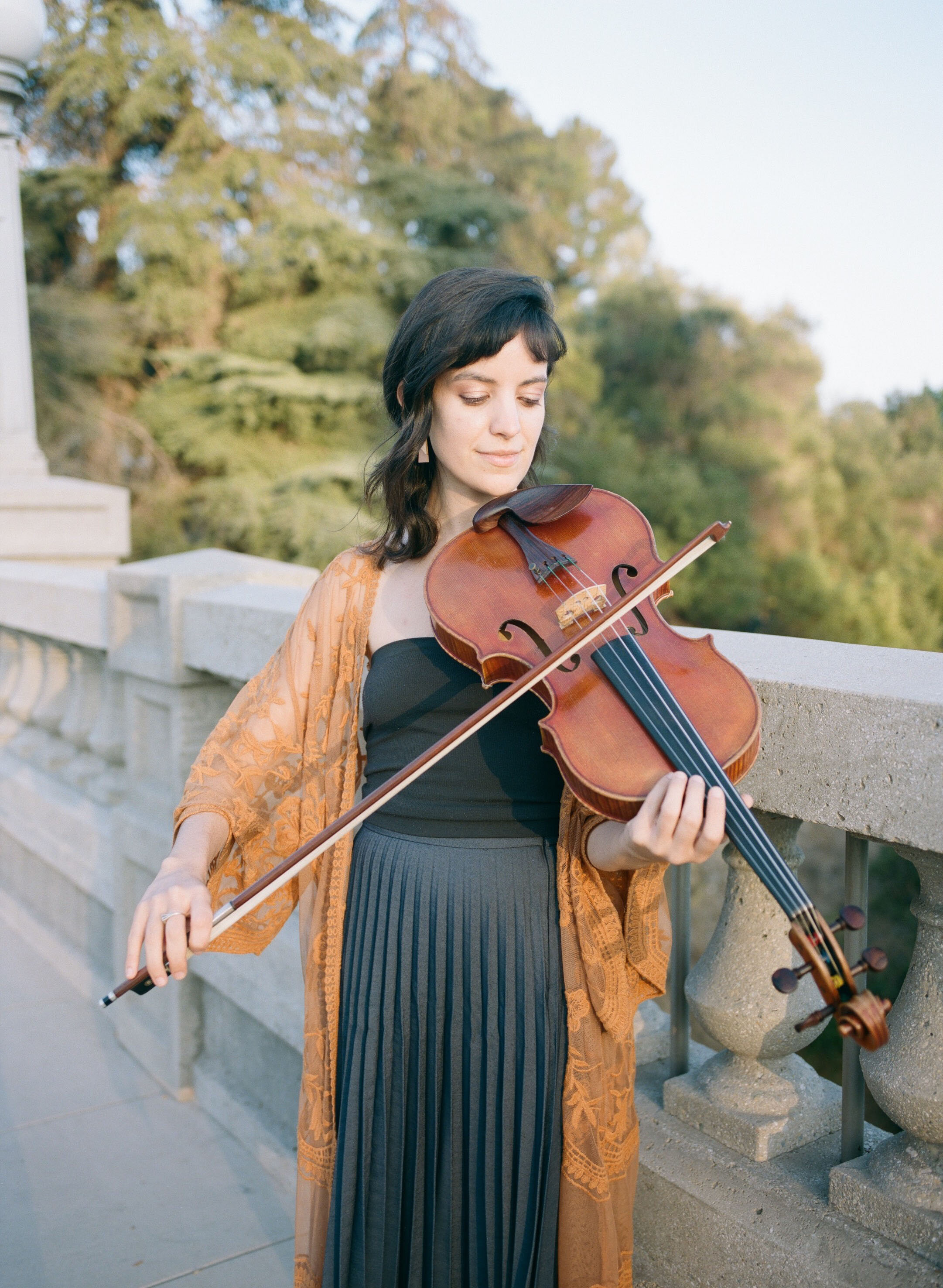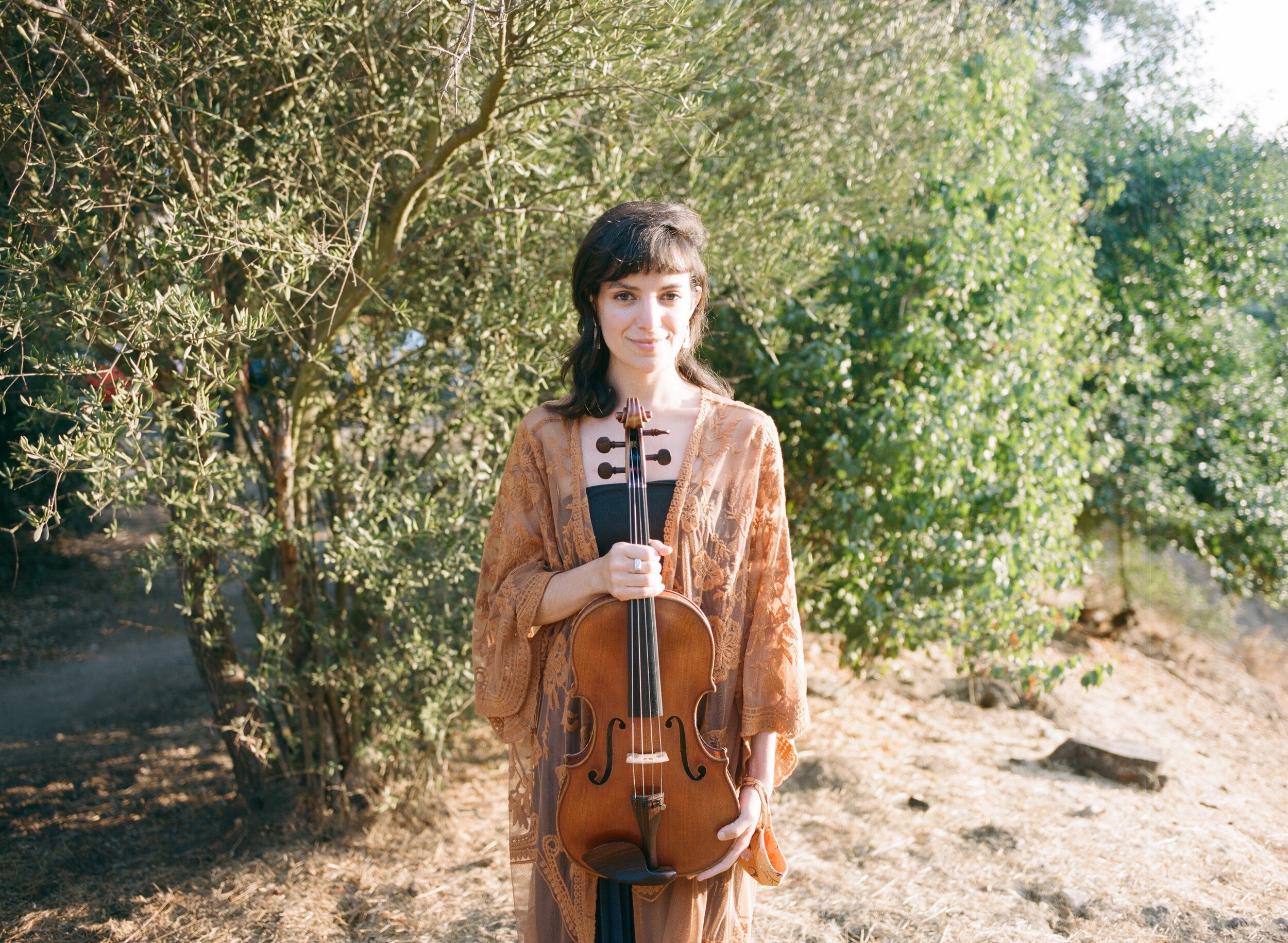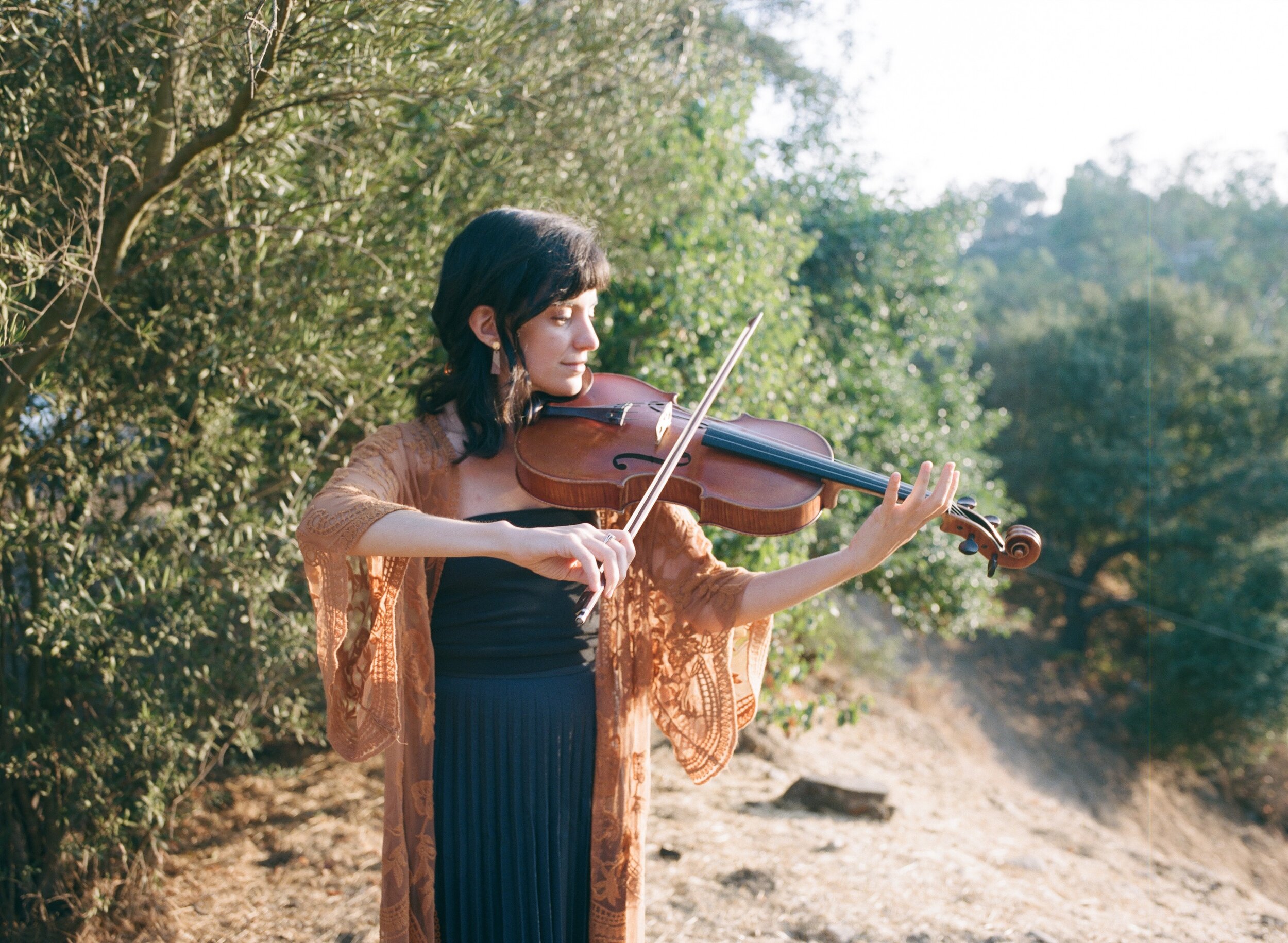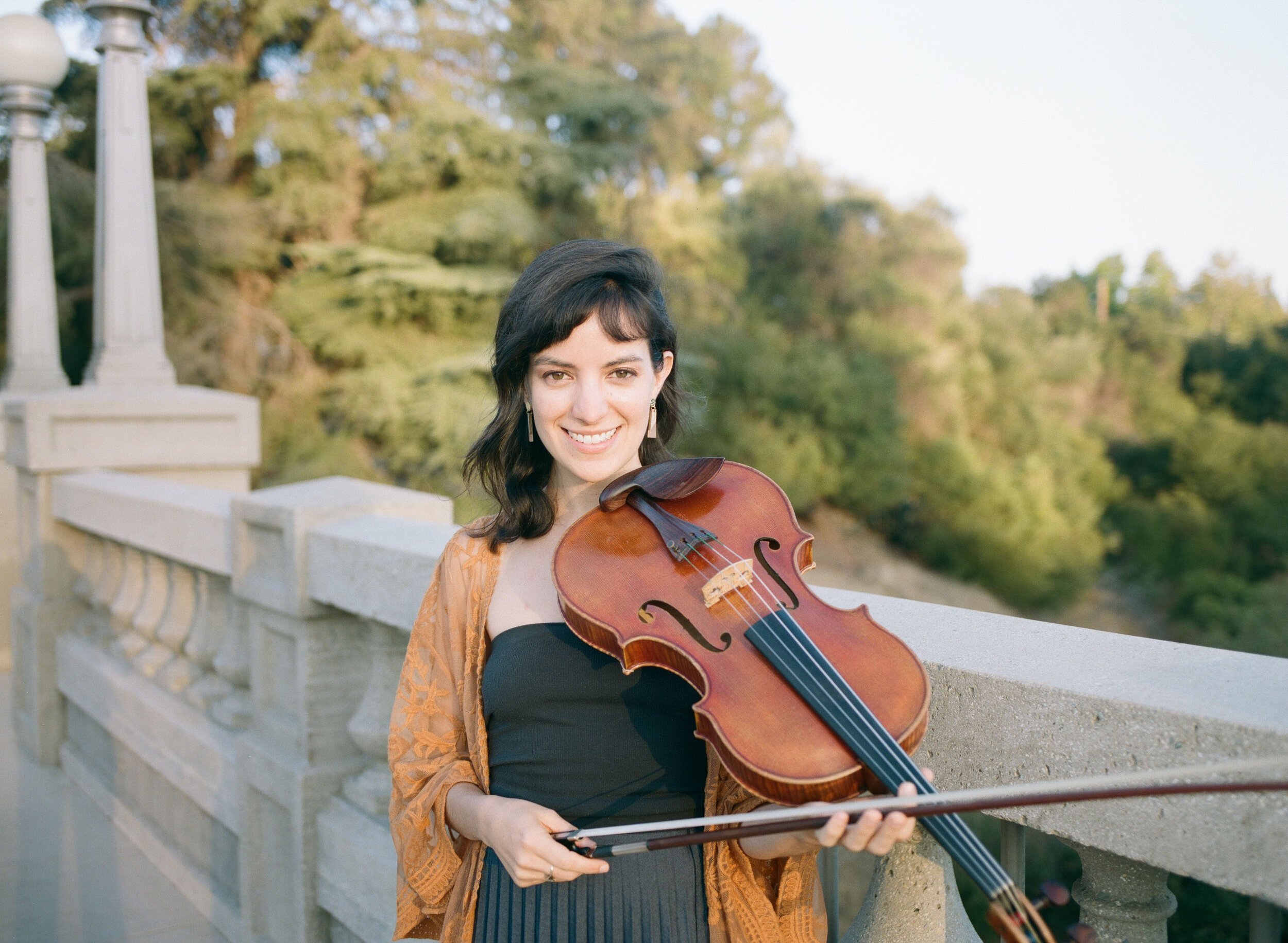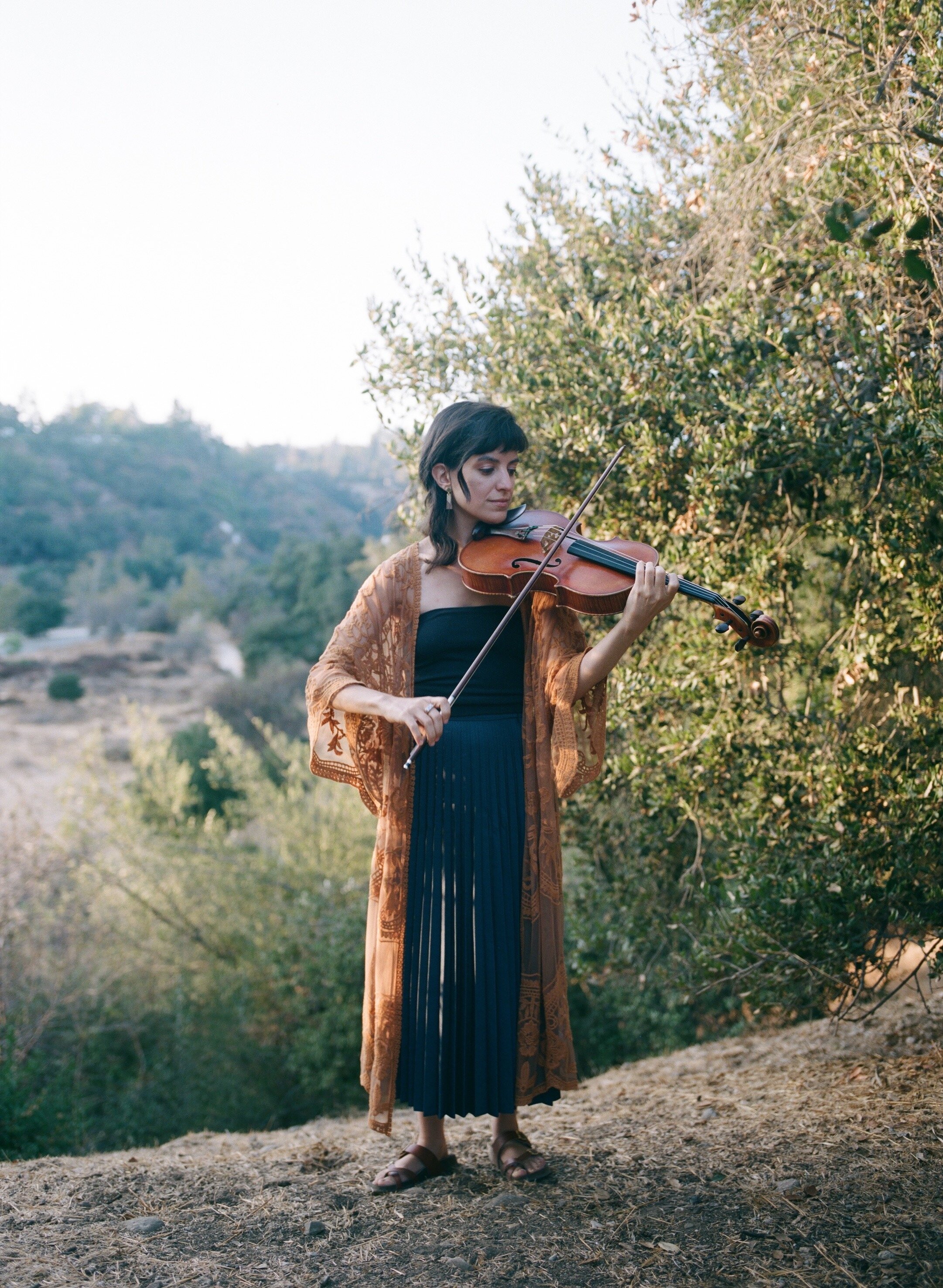Influential & Inspiring People
The IIP Series, also known as the Influential and Inspiring People Series, was created to showcase the many talented, hardworking, and innovative individuals I have had the privilege of knowing. I want to be able to share their stories while inspiring others to build their own paths along the way. My goal is to interview and photograph a list of (so-called “ordinary”) individuals who, in my eyes, are extraordinary. Many of them are making an impact in this world through their passions, and I want their stories to be heard. This one is FOR THE MUSICALLY CURIOUS CHILD.
Rita Andrade
I first met Rita during my work trip in Oslo, Norway. We were both hired by Human Rights Foundation for the Oslo Freedom Forum back in 2019. As I started photographing the start of the forum, the beautiful sound of an all-women string quartet, ATLYS, captivated my attention with the song they were performing called, “Colors.” The forum took place throughout a span of several days, so it was without a doubt that I would end up meeting the lovely ladies that performed on stage. I met them over dinner and I found out that Rita, the founder of ATLYS, lives in LA. The rest was history.
After the event was over, I wanted to continue staying in touch with ATLYS. We organized a photoshoot together where I had the opportunity to photograph the beautiful ladies around the Los Angeles County Museum of Art (LACMA). Later, I had a chance to attend one of their performances in LA and listened to their holiday set, as it was around Christmas time. I had a collaboration in the works with ATLYS prior to Covid, but that project will be on hold as of right now.
Rita attended Idyllwild Arts Academy in California, received her Bachelor’s degree in Music, Viola Performance, at the University of Texas Butler School of Music, and completed her Master’s degree at DePaul University in Chicago. Rita was a member of the Civic Orchestra in Chicago and has played in a number of summer festivals such as the String Academy in Cambridge UK, Encore Chamber Music Festival, Bowdoin Music Festival, Marrowstone Music Festival, and Interlochen Arts Academy. A classically trained and a very passionate artist, I introduce to you, Rita.
How did it all begin? How was Atlys formed?
We met at the Civic Orchestra in Chicago, which is like the apprentice orchestra to the Chicago Symphony. We got to work with the same conductors that come through and work with the Chicago Symphony. There are a lot of preprofessional people just out of grad school or still in school. There, we got to work a lot with Yo-Yo Ma. He’s incredible. He’s just somebody where his charisma and his talent are on par with each other. Some people, that talented, don’t have the stage presence or eloquent ability to speak, but he’s just so inspiring and has both the talent and inspiration to lead other people. He would talk to us a lot about how you don’t have to take the conventional orchestra path. You don’t have to be in the top tier orchestra to call yourself a successful musician. Especially these days, I think all of the arts can relate to how rapidly the world is changing to technology and how that’s changing what we create.
I started a concert series called Flow concert Series. I got the approval from some of the Civic Orchestra donors to hold a concert in one of their homes. It was very special in a fancy home overlooking the lake. I had a string quartet play that actually wasn’t the current members of Atlys. None of them were there (lol). There was a pianist, some singers, a poet, and a visual artist. I was like, “let’s put on this intimate concert and intermingle all these arts together.” We just created this experience for people and it was such a fulfilling feeling to be able to do that. We brought together people from different walks of life and gathered here in a way that people can really connect with. It wasn’t on a big fancy stage. The thing with orchestra is that afterward, people are like, “Wow, great job. What did you play?” I feel like as much as I like the orchestral tradition, and I still always want to continue playing, and I want to find an orchestra to play with again, I was like, “Ohh. Okay. Let’s put a real group together.”
Can you recall the moment when you first decided that you wanted to take viola lessons as a kid?
I was 9. I remember very well the first time I opened my own viola case. It was one of those rinky dinkity cases. The inside was this neon green. The smell of the wood… it feels like a dream. I remember touching the strings. I had no idea, but that was a moment where I remember being like, “This is cool. I have my own instrument now.” But even before that I remember going around the string orientation and at the viola table, there were no other people looking at the instruments. So of course I was like, “Ohh, well I’m gonna go check out the table where no one else is at.” The viola is definitely the odd duckling of the string group. It’s a mysterious instrument. Most people don’t even know what it is and don’t know how it’s different from violin. I ended up picking the viola because I also remember holding a full-size instrument when I was a really tiny kid and feeling it underneath my chin and being that powerful. It kind of just naturally happened, but I was never that kid that was like, “I have to play.” Sometimes I feel like the viola chose me. My mom was like, “You’re in piano lessons, let’s go to the string orientation and see what happens.” And here I am.
As a Texas native, what was the biggest challenge you faced when moving to California? How was it like adapting your artistry to the California lifestyle?
When I first came to California I was 15. I grew up with a very catholic, Puerto Rican mother. I got into some trouble, so oddly enough they sent me to an art school. I got a scholarship to go and it ended up changing my life. Definitely hands down, I wouldn’t be where I am if I hadn’t gone to that school. There’s something about the laid back California mentality that has played a major role in my life since then. I spent three years up in Idylwile and spent a summer in the Cambria area. I just love California in every way. I was drinking Kombucha and hemp milk when I was 15. I ended up going back to college in Austin, Texas, which was great. I played with a chamber pop band there called Mother Falkin. During the day I would be doing my classical stuff and at night I would go jam with my friends. It was this nice balance that I had going, so I have always been interested in the other side of music. When it came to deciding where to go to grad school, I knew I didn’t want to stay. Austin is such an amazing, thriving, artistic city, but for a string player, the ceiling is pretty low. The Austin Symphony is a decent symphony, but it’s not Chicago or New York or LA. I told the quartet that I want to live in LA. I just know. Of course, its stereotypes are true with the superficiality of what it means to make it big, but I am so intrigued by the different pockets of artistry happening. Everywhere you go you meet inspiring people working on inspiring things. It feels like a larger version of Idelwilde for me because I would go to the dance concerts, the poetry readings, and I just loved the artistic nature of being around all different kinds of creatives all the time. There are just pockets of really amazing artwork happening here that are happening on a global level that if you meet the right people and genuinely care about what you are doing and sharing it with others… you will make it work out here. It definitely hasn’t been easy. Before the pandemic, I was slowly getting my momentum and playing it more studios. That was so thrilling to me. I love going into new studios and recording sessions. I was definitely quite bumbed when the pandemic hit, but it is what it is.
What inspires you as an artist? What makes you want to keep creating?
Hearing other people, listening to other people, seeing what other people are creating. I love turning on my Discover playlist because you just never know what’s going to come through. I’m so often amazed at how much music out there that’s happening that’s so amazing. It does get me inspired. It does buzz me to hear other amazing artists. Seeing the ways that others are creating change and beauty and inspiring people to just keep their spirits up. Sometimes it’s really easy to feel like being a musician is a selfish thing, because you are having to constantly promote yourself. It’s easy to forget that the reason we do it is not just so that we can make a living, but so that we can share the beauty of what we do, as string players, with others. It’s a universal language. Everybody has a story. Everyone goes through things, and when people do things that can help you move through those phases and encounters in life, it’s a very powerful thing. Reminding myself that is important because it’s not purely a selfish endeavor, it really is for trying to help the good of humanity.
Tell me more About Your Life At Sea.
It was a partnership with Lincoln Center of New York City. We represented the Lincoln center and worked on the Holland America Line ships. Several different ships for thirteen months over two years. It kind of is the dream job in the sense that as a string player you have all sorts of repertoire. The hardcore classical music and hardcore rock and roll, Led Zeplin and Radiohead, a Latina set, a Jazz set, and a French set. Three shows a night, six nights a week. It was beautiful to wake up in a new place every day. There are sometimes where I really miss it, but at the same time, after being on the ocean for that long, I was really yearning for a place to call home. Ship life was beautiful, but it feels like things get dramatized in a heightened way because it is such a small space to be living with so many people for such an extended amount of time. We often say that because we survived living on a ship together, we can do anything. It’s also such a small demographic of people that it also feels like not the real world. We were just like, “We can’t do this forever, as tempting as it is.” It was an amazing experience though.
Out of all the places you have traveled to with ATLYS, what locations do you think are the epitome of inspiration for all artists?
Spain is one, yes Barcelona. I just remember feeling buzzed walking through that city. Nature wise, Portugal. We flew into a little island off the coast of Portugal called Pantera, and it’s unbelievable. Also Alaska. We did four months in Alaska which was pretty neat. I loved it so much. The mountains, the glacier bays, and seeing the different colors of the ocean are really striking in Alaska. Culturally, Italy is also another one that’s very vibrant. Lots of culture, food, and arts combined in your everyday life in every way. The close proximity of all of those countries, there’s an aliveness that you feel in a very visceral way, in Europe. Here, everything is so spread out and people are so disconnected in their own world. In Europe, everyone is walking around, things are more walkable and the sense of community is a lot tighter.
When it comes to teaching, recording, and performing, what do you get out of each one? Do you think they overlap and influence one another?
They all constantly influence each other. When you become a conscious artist, you also become very good at teaching it. Teaching often informs the way that I play. When you are teaching and verbalizing your own path, it forces you to take the outside perspective of how you do what you do. You hear your own insight and advice that you give to your students when you’re playing, so it’s this constant back and forth conversation that you’re having with yourself as the player and as the teacher. I think really good teachers have spent a lot of time identifying and staying really present with how it is that they do what they do so they can verbalize it and share it with others. Not everyone can do that. There are some amazing players that aren’t very good teachers. I’ve definitely discovered that I prefer teaching older students because it’s an art in itself to be able to teach the young kids and keep it engaging and light-hearted, yet encouraging and helping them find self-discipline. I have mega respect for the people that do that full time. With recording, it’s been so interesting to get more into that during a Pandemic, because it’s also just another light on how it is that we do what we do, and listening in a completely new way. Normally when you go into a studio you just play to the best of your ability and you don’t have to worry about it. But now when I’m sitting there and I play and I listen back to what I play, it’s a whole different ball game. The tendency to be a perfectionist comes out in another way. You just have to figure out how to make it better with your ability right now. I find it really fun to figure out how I can deliver my best playing virtually and remotely. It’s definitely time-consuming. The days and the hours go by so fast, but it’s helped me to become a better player in just listening and opening up your sonic world.
From one Latina to another, how much influence does your culture have in your work as an artist?
Everyday. I think back to my memories of growing up and being around my family and music. Even just the passion with which my family, especially in Puerto Rico and Ecuador, live their lives. The interactions that they have with their kids and how warm and loving and open they are. I am constantly thinking about them and wanting to be more like that. Especially in a society where it’s easy to feel like that kind of behavior or connection is not necessary. Sometimes I dream about moving back to Puerto Rico or somewhere like Spain, because of just the mentality of the people there. Growing up and visiting my grandmother’s house in Puerto Rico… the windows always being open and birds flying in and her constantly reminding me to speak Spanish and get better at it. There’s an underlying passion with everything that they do, so it has, hands down, inspired the passion that I have for my instrument and my way of life.
What were some of the most memorable performances, whether it was for someone you admired or it was in a location you have always dreamed of traveling to?
If I go back to when I was a teenager, I played in a quartet, and my teacher at the time, who actually lives in LA and was the reason for why I came here, put me into a string quartet where they were all a little more advanced than I was, and we did a lot of performances in Austin, Texas. We would play in different summer festivals together. We went to Britt, Oregon together; that was a summer that changed my life in playing with them. Doing the classical stuff, but then going into the small little mountain town and jamming with other musicians. That sense of community… we would have potlucks, our families became really good friends, we would each share different music and books we were reading. It was invigorating for me. My experience in high school was this transitional phase in figuring out what I was doing and becoming. In college, I remember my senior recital being like “This is a glimpse of what it means to be a musician.” Being in the Civic Orchestra was a huge one and playing with guest artists and Yo-Yo Ma. Some people know early on what they want to do, but it took me a while to figure it out even though I was doing this for all those years. I really didn’t’ realize what I wanted to do until maybe a couple of years ago.
For anyone wanting to pursue a career in music, what kind of advice do you have for the musically curious child?
Integrate music into your life in a way that feels comfortable and with ease; that it’s not a forced thing. Anybody wanting to pursue music, focus on the task at hand. Practicing slowly, meditating on what you’re learning, listening to other people playing. If you have your heart on being a musician, know that it’s going to take an X amount of work and being consistent at it. That’s a huge factor. Consistency is key. It’s not necessarily practicing 5-6 hours a day, but it’s the quality of your practice and the attention that you’re giving to it, and being efficient with your time. I always tell my students this: It should be as easy as sitting down for a meal, brushing your teeth, or drinking water. It’s something that we do to live. When sitting down and playing music doesn’t feel that way, then there’s something, maybe, out of balance or perhaps you need to do something else and figure out the kind of enate discipline it takes to be a musician.

